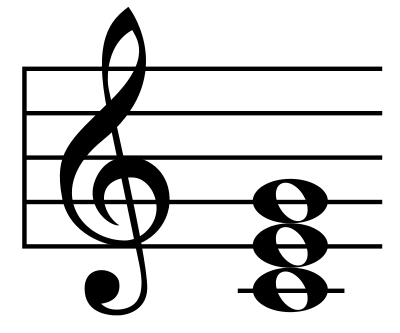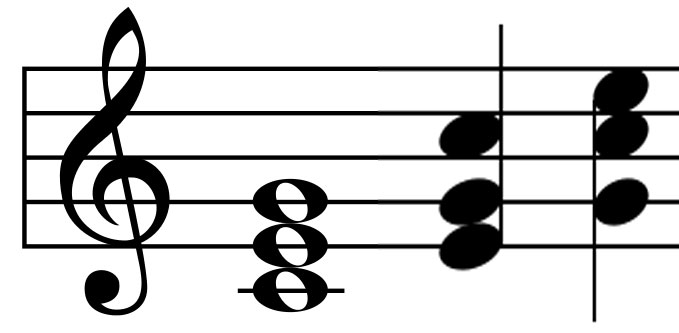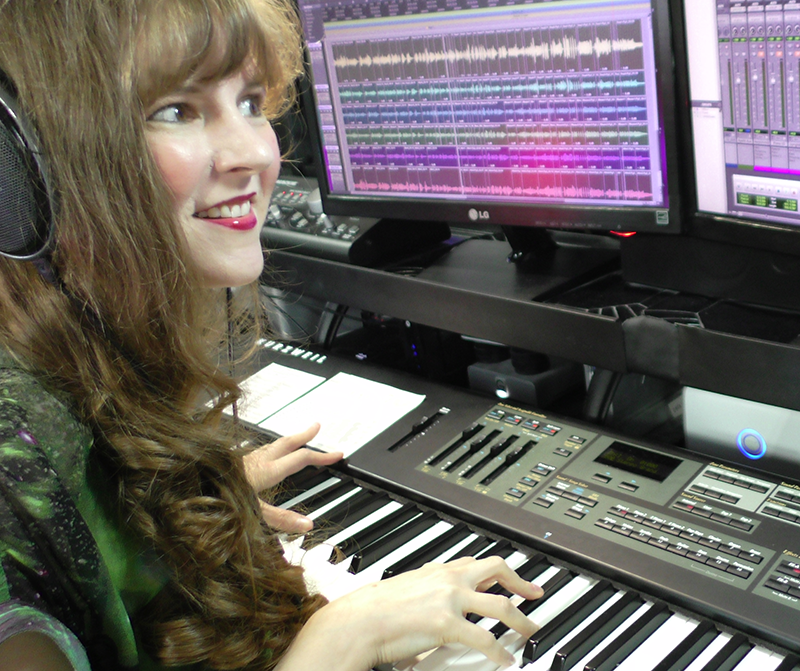
Featured Blog | This community-written post highlights the best of what the game industry has to offer. Read more like it on the Game Developer Blogs or learn how to Submit Your Own Blog Post
Arrangement for Vertical Layers Pt. 3
The third installment of a three-part article series on arrangement for dynamic music systems, with examples from the LittleBigPlanet franchise. Part 3 explores arrangement techniques used for creating harmonic support in a complex vertical arrangement.

 Welcome back to my three-part series of articles about techniques of arrangement for interactive game music! In this series, I’m exploring the discipline of arrangement in relation to interactive game music, using examples from my music for the LittleBigPlanet franchise. In part one, we covered the purpose of the arranger, the value of a strong arrangement, and what differentiates traditional arranging from creating an arrangement for an interactive piece of music. We then discussed techniques for arranging an effective melody in an interactive construct. In part two we extended the discussion to countermelody, exploring techniques that function well when creating a secondary melody for use within interactive music. If you haven't read the first two parts of this series, please click below to catch up:
Welcome back to my three-part series of articles about techniques of arrangement for interactive game music! In this series, I’m exploring the discipline of arrangement in relation to interactive game music, using examples from my music for the LittleBigPlanet franchise. In part one, we covered the purpose of the arranger, the value of a strong arrangement, and what differentiates traditional arranging from creating an arrangement for an interactive piece of music. We then discussed techniques for arranging an effective melody in an interactive construct. In part two we extended the discussion to countermelody, exploring techniques that function well when creating a secondary melody for use within interactive music. If you haven't read the first two parts of this series, please click below to catch up:
Okay, all caught up now? Ready? Let's go!
Harmonic support / chords
 In part one of this blog series, we talked about two concepts that are intrinsic to music: melody and accompaniment. So far we've focused on melody and countermelody, examining concepts and techniques integral to the successful creation of melodic lines. In this article, we'll be talking about the all-important accompaniment. While melodies and countermelodies occupy the center of attention, the accompaniment serves a crucial function. As a strong supporting mechanism, the accompaniment grounds the listener in the key, establishes chord structures/progressions, and lends "harmonic weight" to the composition. Harmonic weight indicates the tendency of certain chords to move logically to other related chords. To make this abstract concept more concrete, let's picture the first chord at the top of a hill, ready to slide right to the next chord, as though tugged there by the weight of gravity.
In part one of this blog series, we talked about two concepts that are intrinsic to music: melody and accompaniment. So far we've focused on melody and countermelody, examining concepts and techniques integral to the successful creation of melodic lines. In this article, we'll be talking about the all-important accompaniment. While melodies and countermelodies occupy the center of attention, the accompaniment serves a crucial function. As a strong supporting mechanism, the accompaniment grounds the listener in the key, establishes chord structures/progressions, and lends "harmonic weight" to the composition. Harmonic weight indicates the tendency of certain chords to move logically to other related chords. To make this abstract concept more concrete, let's picture the first chord at the top of a hill, ready to slide right to the next chord, as though tugged there by the weight of gravity.
Here's a nicely simple video demonstration of this concept produced by the music tutorial site Rhythmic Canada. Let's take a look at the most famous and popular harmonic progression: dominant seventh to tonic.
The progression of chords can lend a sensation of momentum to any composition, implying moments of tension and release as chords proceed in logical and aesthetically desirable ways. As an arranger, it's our job to decide what instruments will carry what notes within the chords, and how each individual chord will be voiced. Let's start with the concept that should be pretty familiar by now: it's occupied the top of our list of considerations in the past two installments of this blog series!
Effective technique: voice leading / step-wise movement
 Voice leading is very important in harmonic progressions, although ensuring good step-wise motion in our chords is not as crucial a consideration for interactive music systems as it is where melodies are concerned. We don't typically separate our chord tones between layers, because that would leave some layers with only partial chords that could not successfully establish a clear harmonic structure on their own. Because the tones of the chords tend to stay grouped into single layers, we don't have to worry about how the individual notes might sound if exposed. However, we should always try to create smooth voice leading within chord progressions, because the technique simply makes the chord movements more satisfying and graceful.
Voice leading is very important in harmonic progressions, although ensuring good step-wise motion in our chords is not as crucial a consideration for interactive music systems as it is where melodies are concerned. We don't typically separate our chord tones between layers, because that would leave some layers with only partial chords that could not successfully establish a clear harmonic structure on their own. Because the tones of the chords tend to stay grouped into single layers, we don't have to worry about how the individual notes might sound if exposed. However, we should always try to create smooth voice leading within chord progressions, because the technique simply makes the chord movements more satisfying and graceful.
Effective technique: close position voicing
In creating chord progressions, we have to consider how we want to space the individual notes of the chord. Close together, or far apart? There are valid reasons to choose either approach, but the Vertical Layering system tends to favor one technique over the other. First, let's look at them both.
 Open position voicing involves the use of large empty intervals between the tones of the chord. The notes are spread out to occupy a broad range - they may even be scattered across several octaves. With open voicing, the individual notes of the chord are clearly discernible, and the chords often convey an airy, delicate texture.
Open position voicing involves the use of large empty intervals between the tones of the chord. The notes are spread out to occupy a broad range - they may even be scattered across several octaves. With open voicing, the individual notes of the chord are clearly discernible, and the chords often convey an airy, delicate texture.
 On the other hand, close position voicing groups the notes of the chord closely together, often within a single octave. The notes are highly localized to a specific frequency range, and complex chords will tend to include clusters (tightly-packed notes that are only a single tone or halftone apart). In a close position voicing, the notes of a chord usually blend together, and they can potentially sound quite warm and full.
On the other hand, close position voicing groups the notes of the chord closely together, often within a single octave. The notes are highly localized to a specific frequency range, and complex chords will tend to include clusters (tightly-packed notes that are only a single tone or halftone apart). In a close position voicing, the notes of a chord usually blend together, and they can potentially sound quite warm and full.
Close position voicing can be especially useful in Vertical Layers, because the frequency range is specific and limited. A layer with close voiced chords will occupy a very specific slice of the available frequency range of the overall mix, so when the layer is deactivated, the removal of that frequency range will be sharply noticeable. Close voiced chords also leave lots of room in the composition for other elements - such as melodies and countermelodies.
Here's an example from LittleBigPlanet 3 The Pod - this is the music from the LittleBigPlanet 3 videogame that greets us at the beginning of the game and whenever we return to the main menu. The harmonic structure is carried and reinforced by a women's choir singing close position chords. Notice how the chords are fully and satisfyingly voiced in a somewhat limited range:
Let's hear how the same section of the composition sounds with the fuller mix now active:
The closely-packed notes of the women's choir fit snugly into the mix without interfering with other musical elements, including the melody and countermelody.
Effective technique: inversions
 When we invert a chord, we change the order of its notes. As an example, in the C major triad chord (composed of C natural, E natural, G natural), the lowest note is the C natural. Now, we can bump the C natural up an octave, so that the lowest note is now the E natural instead (E-G-C). We could also bounce that E natural up an octave too, so that the lowest note would become the G natural (G-C-E). In case you'd like to see that demonstrated, here's a short video produced by Assaf Tal for his video series Piano Quickie:
When we invert a chord, we change the order of its notes. As an example, in the C major triad chord (composed of C natural, E natural, G natural), the lowest note is the C natural. Now, we can bump the C natural up an octave, so that the lowest note is now the E natural instead (E-G-C). We could also bounce that E natural up an octave too, so that the lowest note would become the G natural (G-C-E). In case you'd like to see that demonstrated, here's a short video produced by Assaf Tal for his video series Piano Quickie:
Inversions can be especially useful for Vertical Layering. Often we need to add a sense of chord structure to a layer, so that it will be satisfying when played in isolation. At the same time, another layer may also have needed a harmonic foundation in order to work well when playing alone. So, how do we keep these two chord progressions differentiated from each other? By using different chord inversions in the two layers! That way, we can create a sense of uniqueness in the two chord progressions, while still providing a satisfying harmonic foundation for each layer. Let's listen to an example:
In the LittleBigPlanet Cross Controller game, the player navigates whimsical platforms and obstacles while advancing through an oddball science-fiction epic. The HenOMorph track provided music for a particularly wacky portion of the adventure. Two of the layers included chord progressions. The first layer would often play when our character floated in outer space. A floaty synth carries the chord progression, which gives an impression of downward movement:
The next layer consisted of a countermelody and a chord progression carried by an electric piano. Notice that the chords are now inverted, and this change causes the chords to convey some upward movement:
Now let's listen to that portion of the composition with all layers active:
This example also demonstrates another effective technique, so let's briefly discuss it:
Effective technique: masking
 Masking refers to the tendency of one sound to cover up (or mask) another, essentially drowning it out. As traditional arrangers, we don't want to include anything in our arrangement that will end up not being heard. Professional audio engineers and mixers would likely remove masking sounds (or the sounds that had been masked) in order to clarify the mix and improve the sound quality of the final product. Masking has always been considered bad. It's usually a strict no-no in musical arrangements, but for Vertical Layering, some careful and judicious use of masking can actually work well.
Masking refers to the tendency of one sound to cover up (or mask) another, essentially drowning it out. As traditional arrangers, we don't want to include anything in our arrangement that will end up not being heard. Professional audio engineers and mixers would likely remove masking sounds (or the sounds that had been masked) in order to clarify the mix and improve the sound quality of the final product. Masking has always been considered bad. It's usually a strict no-no in musical arrangements, but for Vertical Layering, some careful and judicious use of masking can actually work well.
In the HenOMorph example (above), the gentle synth chord progression sounds effectively floaty and surreal - ideal for weightless spacewalks. When the layer is played alone, it conveys a very distinct atmosphere. However, when we activate the other layer that carries a similar chord progression, the synth is masked by the stronger and more aggressive tone of the electric piano. The two sounds blend. This is useful, because the two sounds are able to coexist in the full mix, and still create very different textures when their layers are played alone.
Questionable technique: dense chord voicing between layers
While it's possible to include chord progressions in multiple layers and vary the chords with inversions and disparate voicings in order to not exactly duplicate musical content, we should be careful not to create too dense a texture when the layers are played together. Vertical layering is all about simultaneous independent musical content, and compositions created for this system tend to already be busy by nature. By stacking chords up and down so that they occupy a wide range of frequencies, we may effectively fill up all available sonic space. The final result could turn into a wall of sound through which no melody or countermelody could hope to be heard clearly.
 It's always best for us to ensure that the sonic spectrum is riddled with strategically-placed open spaces, ready to host melodic content. If we decide to use chords in multiple layers, its best to either space them apart from each other, or let them exist in the same frequency range so that they either mask or blend when played together. This strategy should leave ample open space available for other musical elements in our arrangement.
It's always best for us to ensure that the sonic spectrum is riddled with strategically-placed open spaces, ready to host melodic content. If we decide to use chords in multiple layers, its best to either space them apart from each other, or let them exist in the same frequency range so that they either mask or blend when played together. This strategy should leave ample open space available for other musical elements in our arrangement.
Questionable technique: modulation
Ah, the key change! Bringer of epic drama to music throughout the ages. Modulation, otherwise known as the key change, is a powerful tool for an arranger to elevate the energy level of a piece or extend it into yet another emotional repetition of that awesome chorus. Here's a fun video produced by the music group CDZA that demonstrates epic key changes as they occurred in lots of successful pop songs:
While key changes are wonderful for infusing drama into a composition, they can be a real problem for interactive music (and for game music in general). Music for video games is often designed to loop. This means that when the track reaches the end of its running time, it will immediately return to the beginning and start playing again. Composing music to seamlessly loop is an art form in and of itself - one that I explore at length in my book, A Composer's Guide to Game Music. I won't go into a full discussion of that topic here, but I will mention that creating an effective loop entails a musical structure that doesn't include any startling or arresting moments. Such attention-grabbing moments would be instantly recognized when they play again, alerting the listener to the looping nature of the track. A key change is precisely one of those arresting details that would definitely be remembered and acknowledged upon repetition.
There are, however, ways to get around this problem and still employ modulation in our arrangements. To make this work, we have to create a precedent that modulation is a naturally occurring phenomenon in our piece, taking place at regular intervals. If key changes happen multiple times, rather than just in one big instance, our listeners will be less likely to recognize any of the individual modulations when they play again.
Conclusion
So we've reached the end of this three-part blog series on the art of arrangement for dynamic music systems in games. We've covered a lot of ground, and explored a lot of issues that confront arrangers working with an interactive system based on Vertical Layers. If you have any questions, observations or personal experiences you'd like to share, please feel free to post them in the comments!
 Winifred Phillips is an award-winning video game music composer whose most recent project is the triple-A first person shooter Homefront: The Revolution. Her other credits include five of the most famous and popular franchises in video gaming: Assassin’s Creed, LittleBigPlanet, Total War, God of War, and The Sims. She is the author of the award-winning bestseller A COMPOSER'S GUIDE TO GAME MUSIC, published by the Massachusetts Institute of Technology Press. As a VR game music expert, she writes frequently on the future of music in virtual reality video games.
Winifred Phillips is an award-winning video game music composer whose most recent project is the triple-A first person shooter Homefront: The Revolution. Her other credits include five of the most famous and popular franchises in video gaming: Assassin’s Creed, LittleBigPlanet, Total War, God of War, and The Sims. She is the author of the award-winning bestseller A COMPOSER'S GUIDE TO GAME MUSIC, published by the Massachusetts Institute of Technology Press. As a VR game music expert, she writes frequently on the future of music in virtual reality video games.
Follow her on Twitter @winphillips.
Read more about:
Featured BlogsAbout the Author(s)
You May Also Like







.jpeg?width=700&auto=webp&quality=80&disable=upscale)








